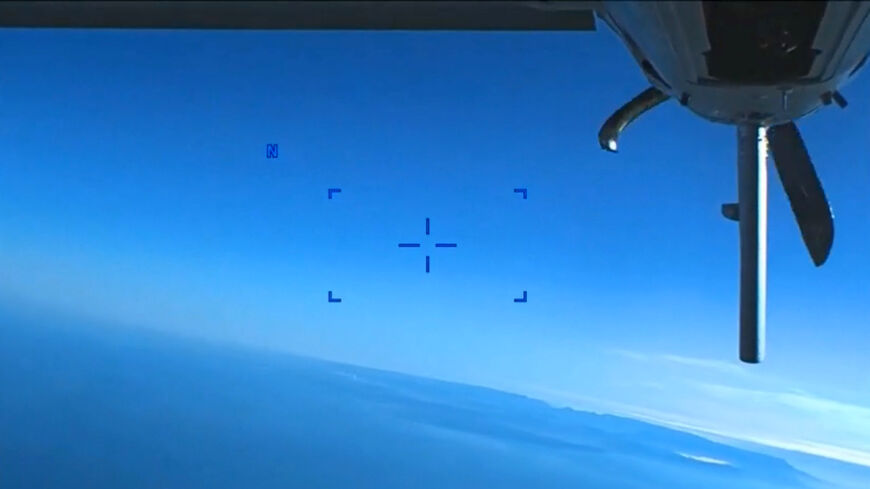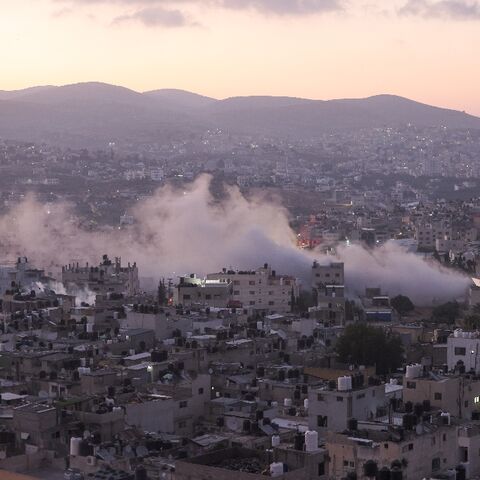A Russian fighter jet dropped flares within a few meters of a US MQ-9 Reaper drone over Syria on Saturday, damaging the drone’s propeller in the latest tense encounter between the two nations’ aircraft.
The US Air Force released video today of a Russian Su-35 approaching the drone, which the military said was damaged during the encounter.
On July 23 Russian military aircraft deployed flares, damaging a U.S. MQ-9 while conducting a defeat-ISIS mission. For the full statement by Lt. Gen. Alex Grynkewich, Commander, 9th AF (AFCENT) visithttps://t.co/5cQm8MQ6aQ@CENTCOM @DeptofDefense @usairforce @CJTFOIR pic.twitter.com/ViVTI3P05i
— US AFCENT (@USAFCENT) July 25, 2023
The run-in is the latest in a series of incidents of Russian fighter pilots interfering with US drones. Earlier this month Russian Su-35 and Su-34 pilots flew in close and dropped flares around US MQ-9s that were preparing a strike against a senior Islamic State figure.
In March, a Russian pilot slammed his Su-27 into a US MQ-9 off Ukraine’s Crimean peninsula over the Black Sea, forcing the unmanned drone to crash.
Earlier this month, a Russian Su-35 flew in the path of a manned US MC-12 turboprop reconnaissance plane, forcing the aircraft to fly through the fighter jet’s turbulence and putting its crew’s lives at risk, the top US Air Force commander for the Middle East, Lt. Gen. Alex Grynkewich, said at the time.
“Russian fighter aircraft flew dangerously close to a U.S. MQ-9 drone on a defeat-ISIS mission, harassing the MQ-9 and deploying flares from a position directly overhead, with only a few meters of separation between aircraft,” Grynkewich said of the latest incident.
“One of the Russian flares struck the U.S. MQ-9, severely damaging its propeller. Fortunately, the MQ-9 crew was able to maintain flight and safely recover the aircraft to its home base,” Grynkewich said.
The encounter over Syria occurred Saturday evening local time, but the military’s statement did not mention specifically where it occurred.
The United States regularly flies unmanned drones over northwest Syria to gather intelligence on suspected Islamic State operatives.
Russian officers have warned US commanders via a deconfliction phone line not to deploy drones over certain areas in recent months, in some cases citing an ongoing air exercise.
A senior US military official speaking on condition of anonymity earlier this month said there’s been no evidence of any such exercise, suggesting Russia is increasingly trying to inhibit US access to Syria’s airspace.
“There was nothing different about our behavior at all, from what we’ve been doing for five years really, since the fall of [IS’] physical caliphate,” the official told reporters.
US military officials say it remains unclear why Russian commanders are doing this now after years of sharing a divided battlefield in Syria, with some 2,500 Russian troops backing the government of President Bashar al-Assad and roughly 900 US troops tracking down the remnants of the Islamic State group.
The United States deployed highly advanced F-22 Raptors to Jordan last month to ward off harassment by Russian fighter pilots who US military officials said had been regularly harassing US ground bases, in some cases multiple times per day.
With the F-22s scheduled to return to Europe, the Pentagon announced last week that F-35s Joint Strike Fighters would head to the region next.








